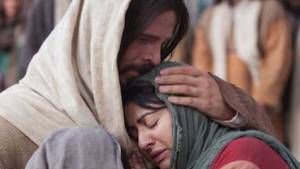Temple Imagery in the Book of Mormon
 The word atonement appears only once in the New Testament, but 127 times in the Old Testament. . . . In the other Standard Works of the Church, atonement (including related terms atone, atoned, atoneth, atoning) appears 44 times, but only 3 times in the Doctrine and Covenants, and twice in the Pearl of Great Price. The other 39 times are all in the Book of Mormon. This puts the Book of Mormon in the milieu of the old Hebrew rites before the destruction of Solomon’s Temple, for after that the Ark and the covering (kapporeth) no longer existed, but the Holy of Holies was still called the bait ha-kapporeth. . . . It has often been claimed that the Book of Mormon cannot contain the ‘fullness of the gospel,’ since it does not have temple ordinances. As a matter of fact, they are everywhere in the book if we know where to look for them, and the dozen or so discourses on the Atonement in the Book of Mormon are replete with temple imagery. From all the meanings of kaphar and kippurim, we concluded that the literal meaning of kaphar and kippurim is a close and intimate embrace, which took place at the kapporeth, or the front cover or flap of the tabernacle or tent. The Book of Mormon instances are quite clear, for example, ‘Behold, he sendeth an invitation unto all men, for the arms of mercy are extended towards them, and he saith: Repent, and I will receive you’ (Alma 5:33). ‘But behold, the Lord hath redeemed my soul from hell; I have beheld his glory, and I am encircled about eternally in the arms of his love’ (2 Nephi 1:15). To be redeemed is to be atoned. From this it should be clear what kind of oneness is meant by the Atonement—it is being received in a close embrace of the prodigal son. (Hugh Nibley, Approaching Zion, 566-67)
The word atonement appears only once in the New Testament, but 127 times in the Old Testament. . . . In the other Standard Works of the Church, atonement (including related terms atone, atoned, atoneth, atoning) appears 44 times, but only 3 times in the Doctrine and Covenants, and twice in the Pearl of Great Price. The other 39 times are all in the Book of Mormon. This puts the Book of Mormon in the milieu of the old Hebrew rites before the destruction of Solomon’s Temple, for after that the Ark and the covering (kapporeth) no longer existed, but the Holy of Holies was still called the bait ha-kapporeth. . . . It has often been claimed that the Book of Mormon cannot contain the ‘fullness of the gospel,’ since it does not have temple ordinances. As a matter of fact, they are everywhere in the book if we know where to look for them, and the dozen or so discourses on the Atonement in the Book of Mormon are replete with temple imagery. From all the meanings of kaphar and kippurim, we concluded that the literal meaning of kaphar and kippurim is a close and intimate embrace, which took place at the kapporeth, or the front cover or flap of the tabernacle or tent. The Book of Mormon instances are quite clear, for example, ‘Behold, he sendeth an invitation unto all men, for the arms of mercy are extended towards them, and he saith: Repent, and I will receive you’ (Alma 5:33). ‘But behold, the Lord hath redeemed my soul from hell; I have beheld his glory, and I am encircled about eternally in the arms of his love’ (2 Nephi 1:15). To be redeemed is to be atoned. From this it should be clear what kind of oneness is meant by the Atonement—it is being received in a close embrace of the prodigal son. (Hugh Nibley, Approaching Zion, 566-67)
